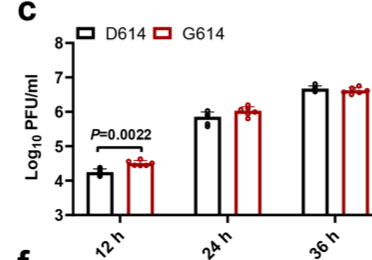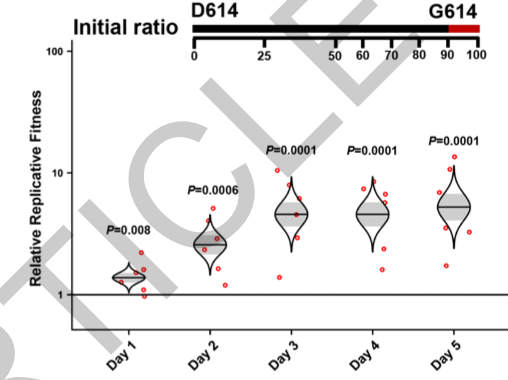Great paper investigating the infamous D614G coronavirus mutation in the lab. Clearly shows G614 better at infecting human cells in a dish, as well as hamsters. A couple of thoughts in the context of the genetic epidemiology of the virus. 1/n https://twitter.com/nature/status/1320748728014249985">https://twitter.com/nature/st...
There& #39;s an interesting contrast between a small absolute difference of D vs G (Fig 1c, below left) and a striking competitive difference. When infecting cells with a 9:1 ratio of D to G, the G still rapidly takes over (Fig 3g, below right) 2/n
And I think that reveals an easy to overlook point about evolution: even a tiny selective advantage is unstoppable given enough generations to be applied. Once the G variant appears somewhere (in this case, cells in a dish), it rapidly dominates. 3/n
And same has happened to the virus population around the world. D variant is now almost extinct in the UK: last example from @CovidGenomicsUK was > 1 month ago, during which time we have posted >17,000 G seqs. (Less data in other countries, but pattern is the same globally) 4/n
Which brings me to this sobering sentence from the paper: "All of the COVID-19 vaccines currently in clinical trials are based on the original D614 spike sequence". The authors& #39; experiments suggest that they should still work against G614, but only time will tell. 5/n
For another good take, including observations on what& #39;s not in this paper (inter-host transmission experiments), see @angie_rasmussen& #39;s thread: https://twitter.com/angie_rasmussen/status/1320861345051365376?s=20">https://twitter.com/angie_ras... 6/6

 Read on Twitter
Read on Twitter



